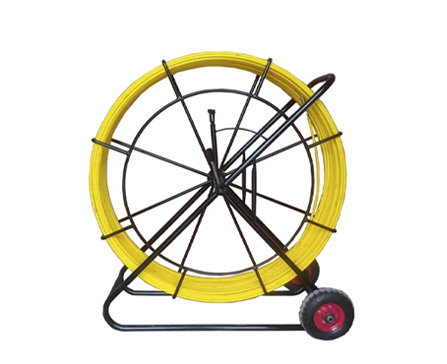
-
 Afrikaans
Afrikaans -
 Albanian
Albanian -
 Amharic
Amharic -
 Arabic
Arabic -
 Armenian
Armenian -
 Azerbaijani
Azerbaijani -
 Basque
Basque -
 Belarusian
Belarusian -
 Bengali
Bengali -
 Bosnian
Bosnian -
 Bulgarian
Bulgarian -
 Catalan
Catalan -
 Cebuano
Cebuano -
 Corsican
Corsican -
 Croatian
Croatian -
 Czech
Czech -
 Danish
Danish -
 Dutch
Dutch -
 English
English -
 Esperanto
Esperanto -
 Estonian
Estonian -
 Finnish
Finnish -
 French
French -
 Frisian
Frisian -
 Galician
Galician -
 Georgian
Georgian -
 German
German -
 Greek
Greek -
 Gujarati
Gujarati -
 Haitian Creole
Haitian Creole -
 hausa
hausa -
 hawaiian
hawaiian -
 Hebrew
Hebrew -
 Hindi
Hindi -
 Miao
Miao -
 Hungarian
Hungarian -
 Icelandic
Icelandic -
 igbo
igbo -
 Indonesian
Indonesian -
 irish
irish -
 Italian
Italian -
 Japanese
Japanese -
 Javanese
Javanese -
 Kannada
Kannada -
 kazakh
kazakh -
 Khmer
Khmer -
 Rwandese
Rwandese -
 Korean
Korean -
 Kurdish
Kurdish -
 Kyrgyz
Kyrgyz -
 Lao
Lao -
 Latin
Latin -
 Latvian
Latvian -
 Lithuanian
Lithuanian -
 Luxembourgish
Luxembourgish -
 Macedonian
Macedonian -
 Malgashi
Malgashi -
 Malay
Malay -
 Malayalam
Malayalam -
 Maltese
Maltese -
 Maori
Maori -
 Marathi
Marathi -
 Mongolian
Mongolian -
 Myanmar
Myanmar -
 Nepali
Nepali -
 Norwegian
Norwegian -
 Norwegian
Norwegian -
 Occitan
Occitan -
 Pashto
Pashto -
 Persian
Persian -
 Polish
Polish -
 Portuguese
Portuguese -
 Punjabi
Punjabi -
 Romanian
Romanian -
 Russian
Russian -
 Samoan
Samoan -
 Scottish Gaelic
Scottish Gaelic -
 Serbian
Serbian -
 Sesotho
Sesotho -
 Shona
Shona -
 Sindhi
Sindhi -
 Sinhala
Sinhala -
 Slovak
Slovak -
 Slovenian
Slovenian -
 Somali
Somali -
 Spanish
Spanish -
 Sundanese
Sundanese -
 Swahili
Swahili -
 Swedish
Swedish -
 Tagalog
Tagalog -
 Tajik
Tajik -
 Tamil
Tamil -
 Tatar
Tatar -
 Telugu
Telugu -
 Thai
Thai -
 Turkish
Turkish -
 Turkmen
Turkmen -
 Ukrainian
Ukrainian -
 Urdu
Urdu -
 Uighur
Uighur -
 Uzbek
Uzbek -
 Vietnamese
Vietnamese -
 Welsh
Welsh -
 Bantu
Bantu -
 Yiddish
Yiddish -
 Yoruba
Yoruba -
 Zulu
Zulu


Dec . 07, 2024 12:40 Back to list
metal cable tie price
The Cost of Metal Cable Ties A Comprehensive Overview
Metal cable ties, also known as stainless steel cable ties, are indispensable tools in various industries for bundling, securing, and organizing cables and wires. Due to their durability, resistance to environmental factors, and ability to withstand high temperatures, metal cable ties are preferred over traditional plastic ties in many applications. However, as with any industrial product, the price of metal cable ties can vary significantly based on several factors, which are worth exploring to understand their economic implications better.
Factors Influencing the Price of Metal Cable Ties
1. Material Quality The primary determinant of the price of metal cable ties is the quality of the raw materials used. Stainless steel ties are generally more expensive than those made from lower-grade metals or alloys. The most commonly used materials include 304 and 316 stainless steel, with 316 being more costly due to its superior corrosion resistance. Industries operating in harsh environments, such as marine or chemical sectors, often opt for 316 stainless steel, reflecting the higher price point.
2. Tie Specifications Metal cable ties come in various sizes, lengths, and strengths. Longer ties or those designed to carry heavier loads typically cost more. Additionally, specialized features such as locking mechanisms and weatherproof coatings can further increase the price. When selecting a metal cable tie, it's essential to consider not just the initial cost but also the application-specific requirements.
3. Brand and Manufacturer Prices can also vary significantly between brands and manufacturers. Established brands with a reputation for quality and reliability often charge a premium. It's crucial to choose reputable suppliers who guarantee product performance, as a lower price might result in compromises in quality.
metal cable tie price

4. Market Demand Like many other products, the price of metal cable ties can fluctuate based on market demand. Certain times of the year, such as during construction booms or after natural disasters, can see an increase in demand that raises prices. Additionally, global supply chain issues, such as those seen during the COVID-19 pandemic, can also affect availability and pricing.
5. Purchase Volume and Supplier Relationships Buying metal cable ties in bulk can significantly reduce the price per unit. Many suppliers offer discounts for bulk orders or regular customers, encouraging businesses to stock up on essential supplies. Building a good relationship with a supplier can also lead to better pricing and consistent supply.
Cost Comparisons
While prices can vary widely, a ballpark figure for metal cable ties ranges from approximately $0.10 to $1.50 per tie, depending on the factors mentioned above. For example, a standard 8-inch stainless steel tie may cost around $0.25 to $0.50, while a heavy-duty 36-inch version could be priced between $1.00 and $1.50. It's essential for businesses to calculate their total costs, including shipping and handling, when budgeting for these tools, especially if purchasing in larger quantities.
Conclusion
In summary, the price of metal cable ties is influenced by various factors, including material quality, tie specifications, brand reputation, market demand, and purchasing strategies. While investing in high-quality metal cable ties may initially appear costly, their long-lasting nature and performance benefits often justify the expense, especially in demanding environments. Businesses should conduct thorough research, compare prices across suppliers, and consider their specific needs to make informed purchasing decisions. As industries continue to evolve and prioritize efficiency and reliability, metal cable ties are set to remain a vital component of various operational processes, making their cost a worthwhile investment.
Latest news
What Are Construction Tools and How Are They Used?
NewsJul.11,2025
Professional-Grade Duct Rodding Tools for Superior Cable Installation
NewsJul.11,2025
Enhancing Safety and Efficiency with Modern Hot Stick Solutions
NewsJul.11,2025
Empowering Cable Installation with Advanced Rodder Solutions
NewsJul.11,2025
Elevate Your Cable Installation Projects with Cable Pulling Tools
NewsJul.11,2025
Efficient Cable Handling Solutions: Cable Rollers for Sale
NewsJul.11,2025











